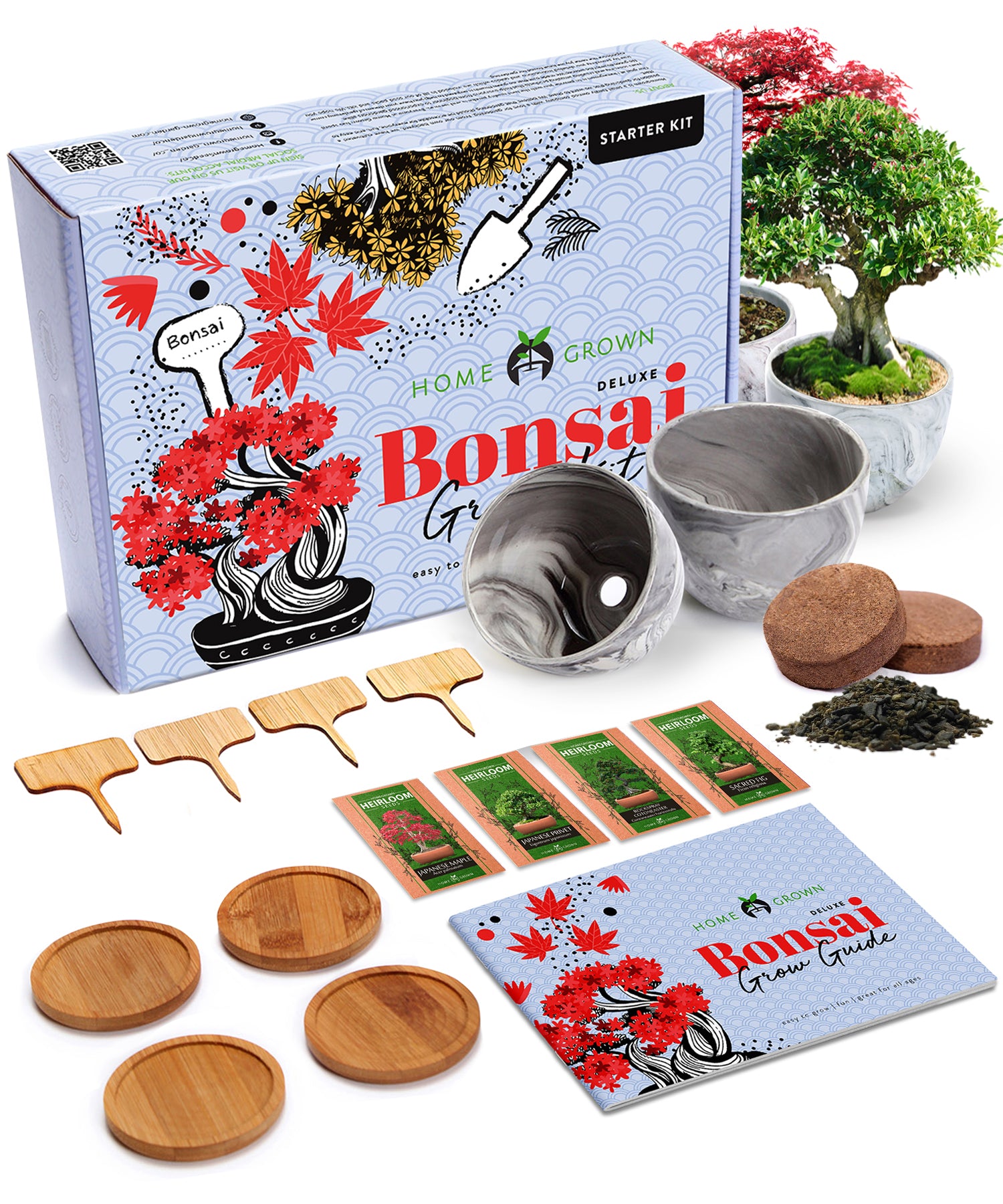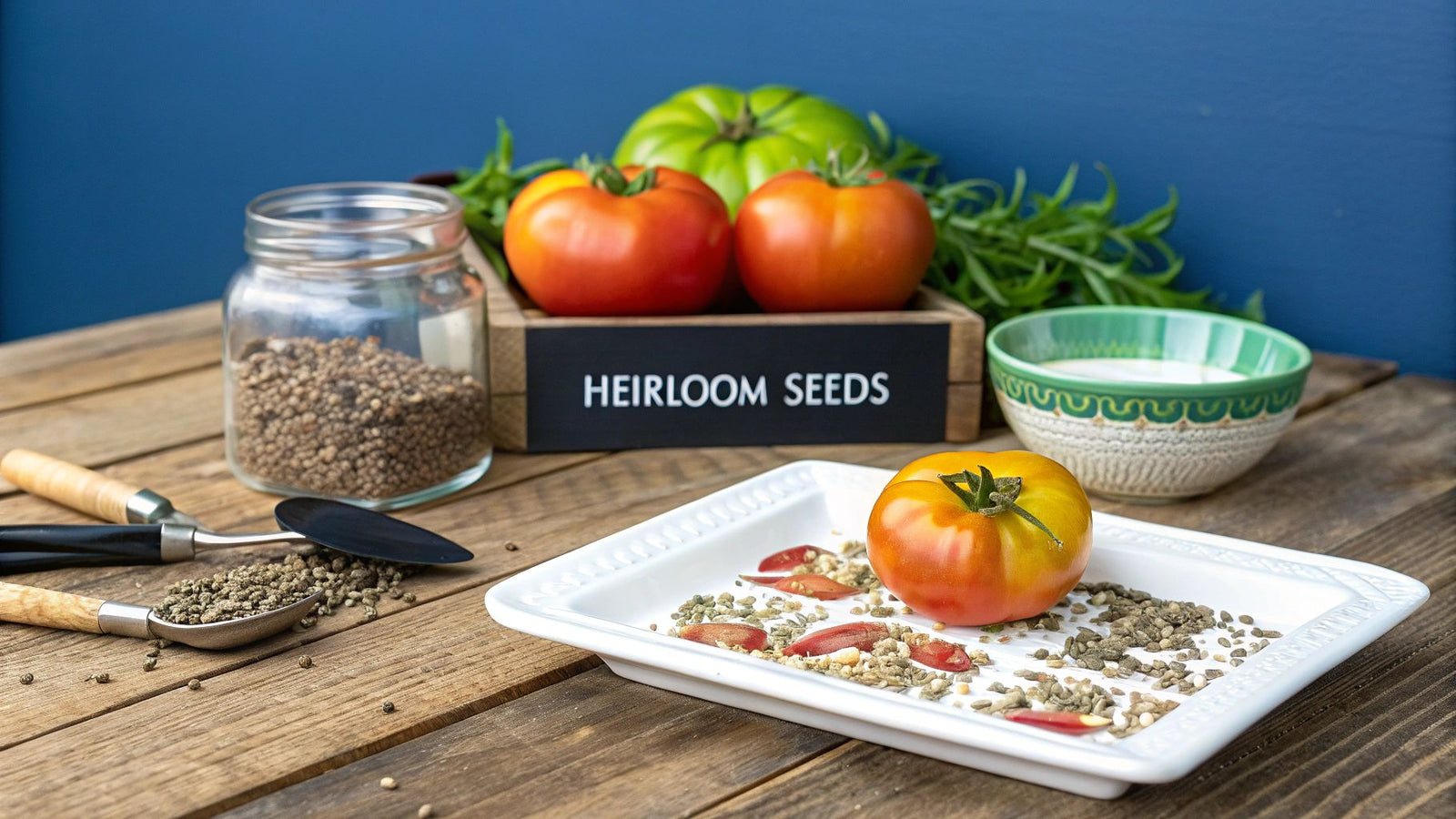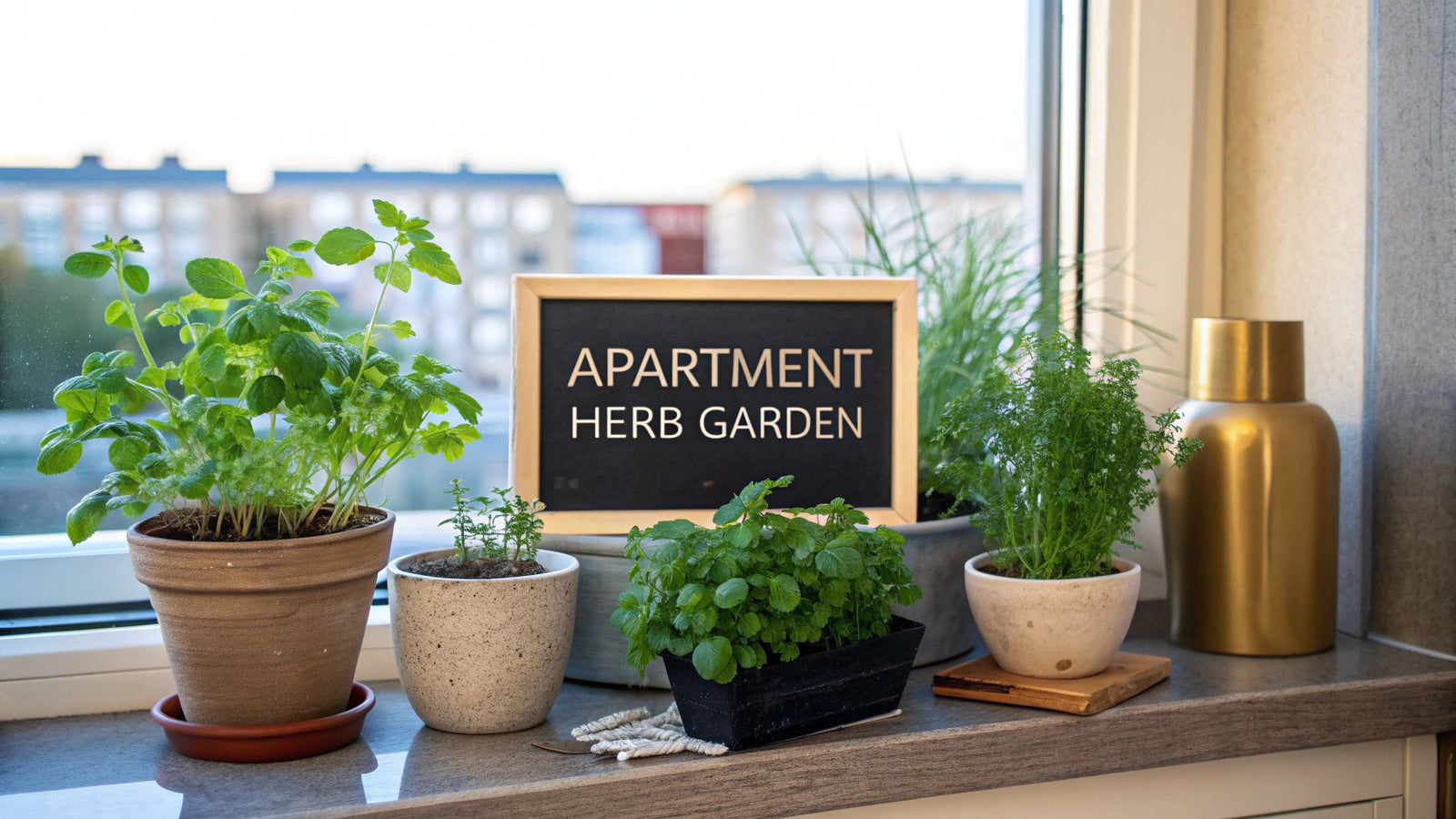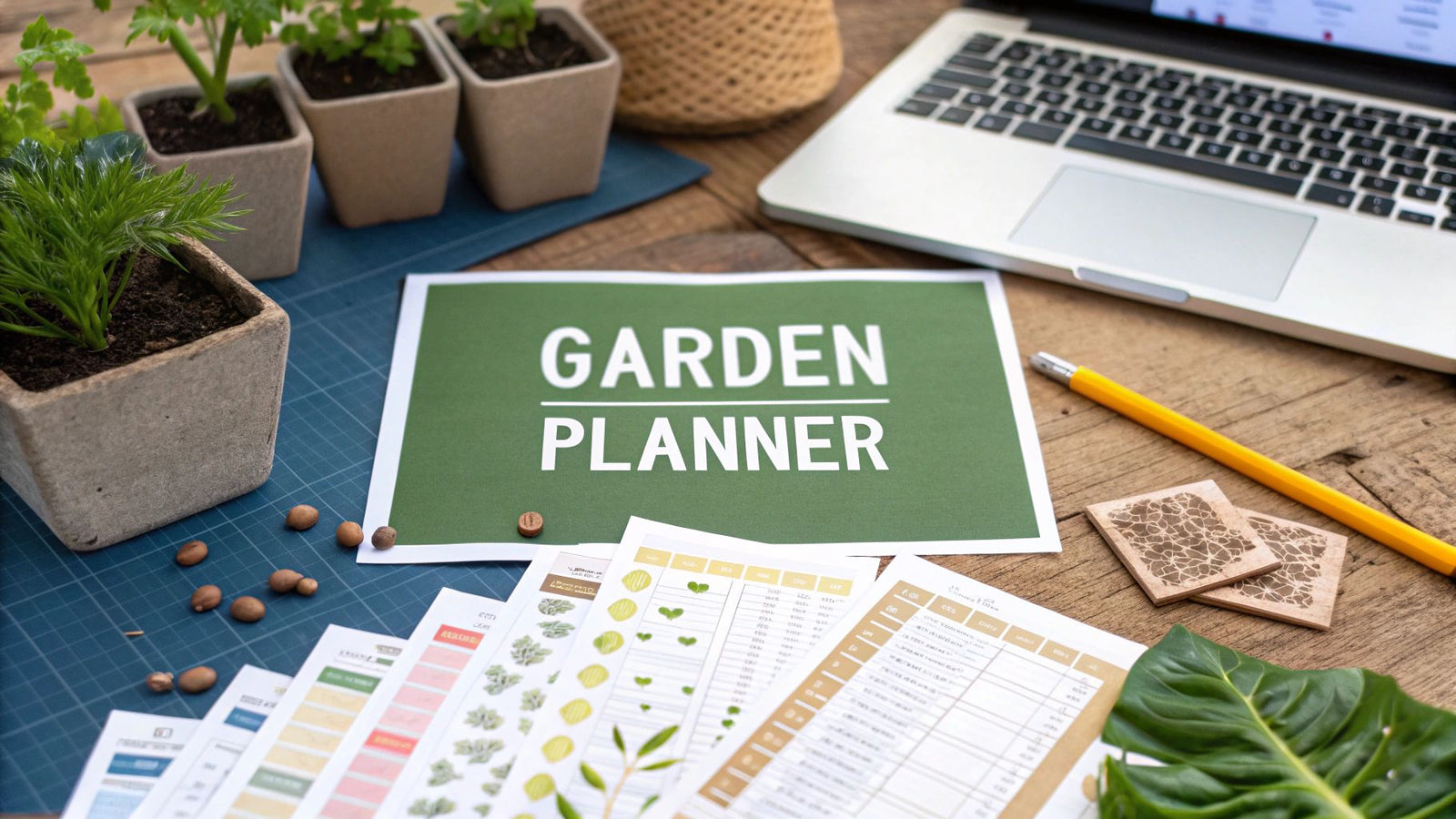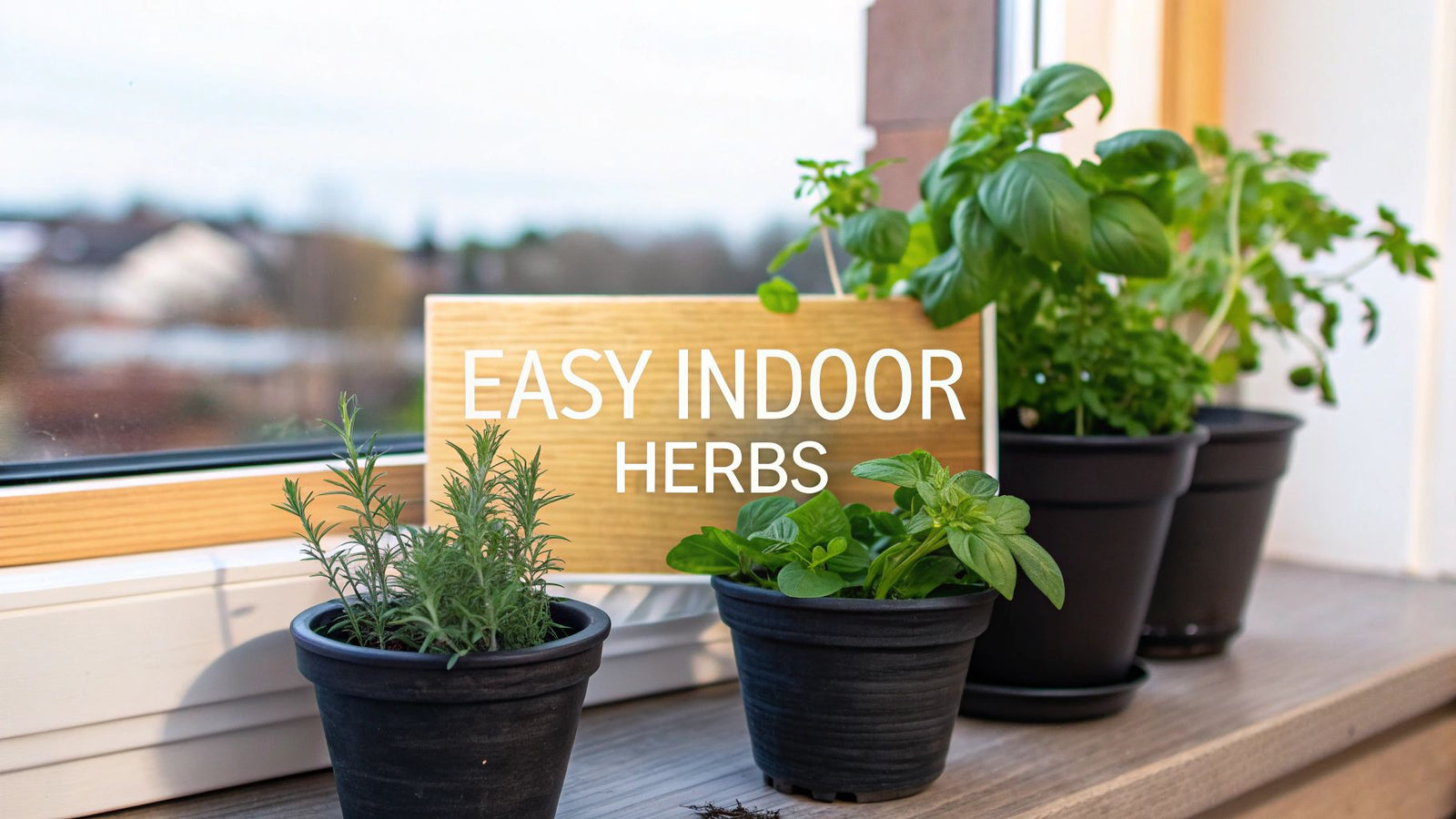
Imagine snipping fresh, aromatic herbs right from your kitchen windowsill, adding a burst of flavor to your meals anytime you wish. This isn't a dream reserved for seasoned gardeners with sprawling outdoor spaces. With the right selection of plants, anyone can cultivate a vibrant and productive herb garden indoors, creating a rewarding experience that offers culinary benefits and a touch of green to brighten your home.
The key to success, especially for beginners, is choosing plants that are forgiving, adaptable, and well-suited to common household conditions. Forget the frustration of struggling plants; we're focusing on the foolproof options that will build your confidence. This guide dives into the seven absolute easiest herbs to grow indoors, detailing everything from their unique characteristics to specific care requirements.
We will provide actionable tips on light, watering, and potting to help you sidestep common pitfalls and ensure your indoor garden flourishes. To ensure your indoor gardening journey is successful and enjoyable, consider these essential gardening tips for a rewarding experience which can help streamline your setup and care routine. Whether you have a sun-drenched window or just a small space under a grow light, these herbs are your gateway to a sustainable, homegrown harvest. Let's get growing
1. Basil (Ocimum basilicum)
Basil is a quintessential herb for any indoor garden, beloved for its sweet, aromatic leaves that are a staple in everything from pesto to Caprese salads. As a tender annual, it thrives in the stable, warm conditions found indoors, making it one of the easiest herbs to grow indoors for beginners and seasoned gardeners alike. While Sweet Basil (specifically Genovese) is the most common choice, don't hesitate to explore other varieties like Thai, lemon, or purple basil to add a unique twist to your culinary creations.
Why Basil Thrives Indoors
The key to successfully growing basil indoors is mimicking its native Mediterranean climate: plenty of warmth and bright light. A sunny, south-facing kitchen window is the ideal location, providing the necessary light and keeping your fresh supply within arm's reach for cooking. Urban gardeners often see incredible results using simple hydroponic kits, which provide consistent water and nutrients without the need for soil.
For a quick reference on its core needs, here is a summary box visualizing basil's ideal growing conditions.
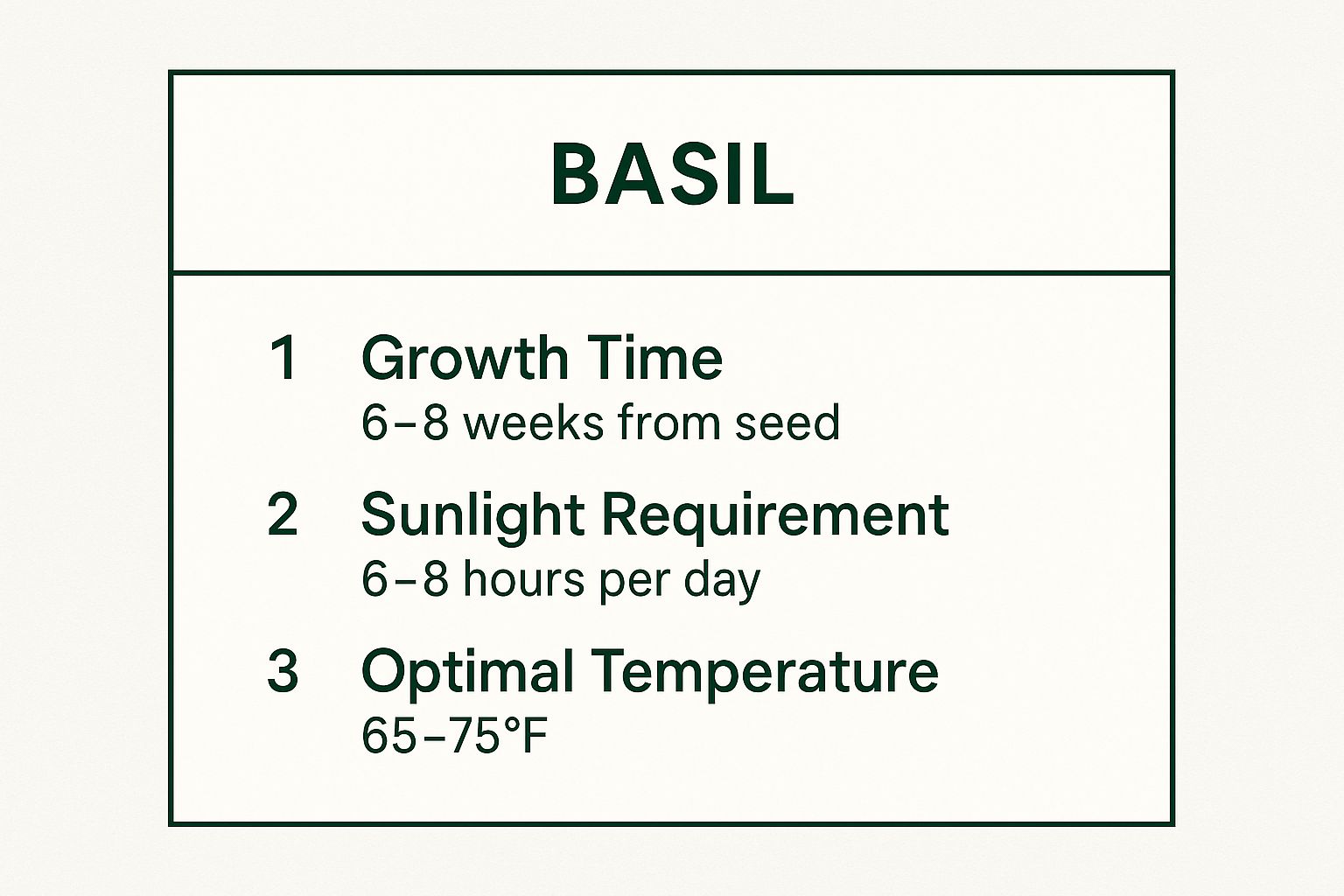
These data points confirm that consistent warmth and light are the most critical factors for a thriving indoor basil plant.
Actionable Tips for a Bountiful Harvest
To ensure a continuous supply of fresh leaves, follow these specific guidelines:
- Potting and Soil: Choose a pot at least 5 inches in diameter with excellent drainage holes. Use a high-quality, well-draining potting mix to prevent root rot, a common issue with overwatering.
- Watering Wisely: Water your basil when the top inch of soil feels dry to the touch. Water at the base of the plant to keep the leaves dry and reduce the risk of fungal diseases.
- Harvesting for Growth: Once the plant has several sets of leaves, begin harvesting regularly. Pinch off the top sets of leaves just above a leaf node (where two leaves grow out from the stem). This encourages the plant to become bushier and more productive.
Key Insight: Regular harvesting is not just for your dinner plate; it is a crucial pruning technique that signals the plant to branch out, preventing it from becoming tall and leggy.
2. Mint (Mentha species)
Mint is one of the most forgiving herbs for indoor gardening, famous for its vigorous growth and refreshing aroma that can fill a room. This perennial herb is actually easier to control when grown in containers indoors, as its aggressive runners can quickly become invasive in an outdoor garden bed. Growing it inside makes mint one of the easiest herbs to grow indoors because you can contain its ambition while enjoying its abundant leaves. Popular varieties like peppermint and spearmint are just the beginning; consider exploring chocolate mint or apple mint for unique flavors in teas, desserts, and cocktails.
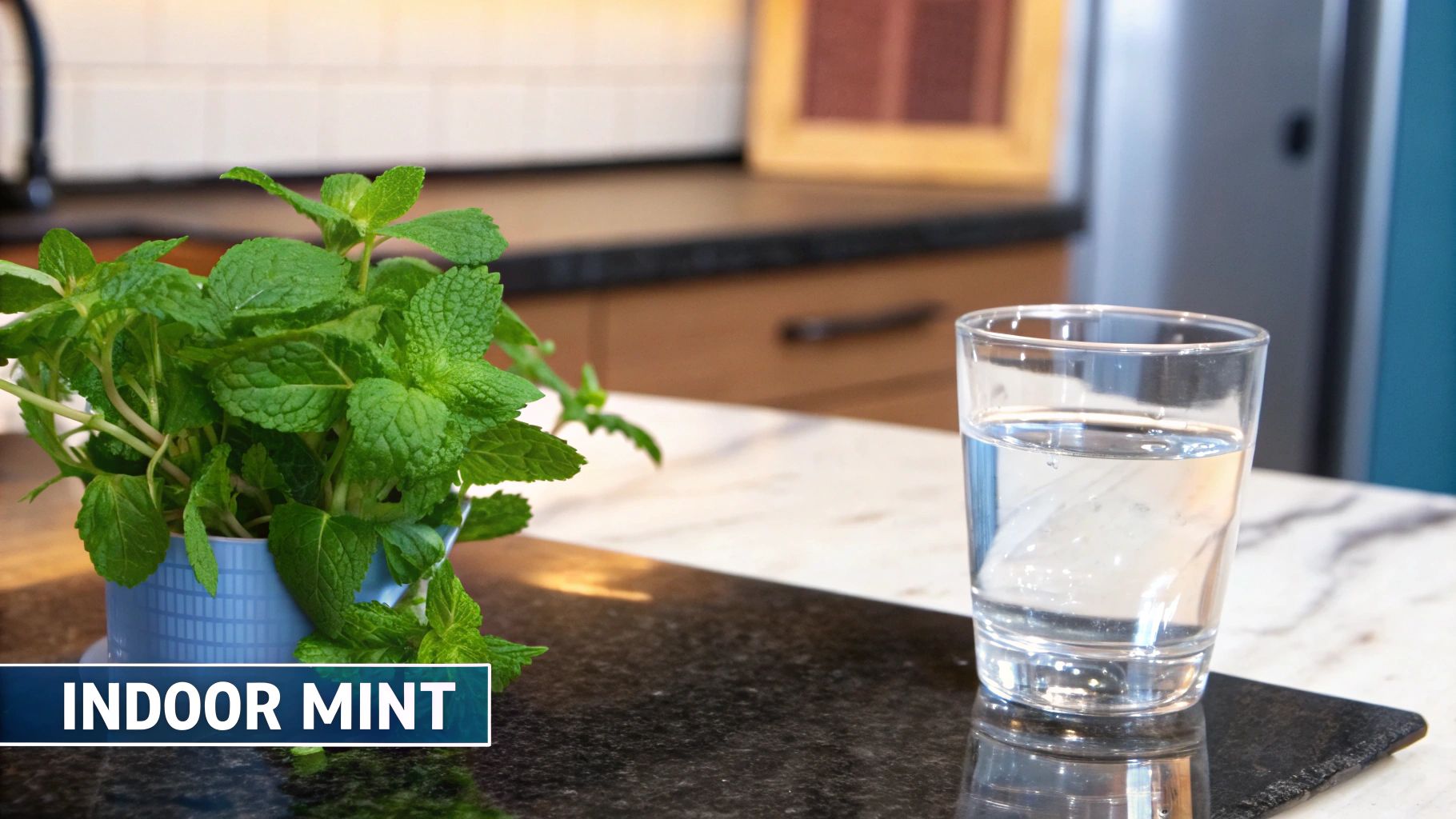
Why Mint Thrives Indoors
Mint is notoriously adaptable, making it a stellar candidate for indoor environments that might not be perfect for other plants. It tolerates a wider range of light conditions than sun-loving herbs like basil, thriving in everything from a bright, sunny spot to a more moderately lit corner. Peppermint, for example, grows successfully in humid bathroom windows, while spearmint can flourish under simple grow lights in a basement. Its resilience and less-demanding nature mean you can enjoy a fresh supply with minimal fuss.
For more information on getting started with herbs, you can find a wealth of knowledge in this guide to springtime herb gardening.
Actionable Tips for a Bountiful Harvest
To keep your mint plant healthy and productive, apply these targeted strategies:
- Potting and Soil: Choose a wide rather than deep pot to accommodate its spreading nature. Ensure the pot has good drainage and use a standard, well-draining potting mix.
- Watering Wisely: Mint prefers consistently moist, but not waterlogged, soil. Water thoroughly whenever the top of the soil feels slightly dry to the touch.
- Harvesting for Growth: Regular harvesting is key. Snip stems just above a leaf node to encourage bushier growth. You can harvest individual leaves as needed or cut back larger sections.
Key Insight: Unlike many herbs, mint's aggressive growth is a feature, not a bug, for indoor gardeners. By giving it its own container, you turn its invasive tendency into a self-renewing, endless supply of fresh leaves.
3. Chives (Allium schoenoprasum)
Chives are a fantastically forgiving herb, making them a top contender for anyone just starting an indoor garden. As a hardy perennial in the onion family, they offer a continuous supply of slender, hollow leaves with a delicate, mild onion flavor perfect for sprinkling over eggs, potatoes, or salads. Their grass-like appearance adds a lovely vertical green accent to any space, and they even produce attractive, edible purple flowers. Their resilience and low-maintenance nature solidify their spot as one of the easiest herbs to grow indoors.
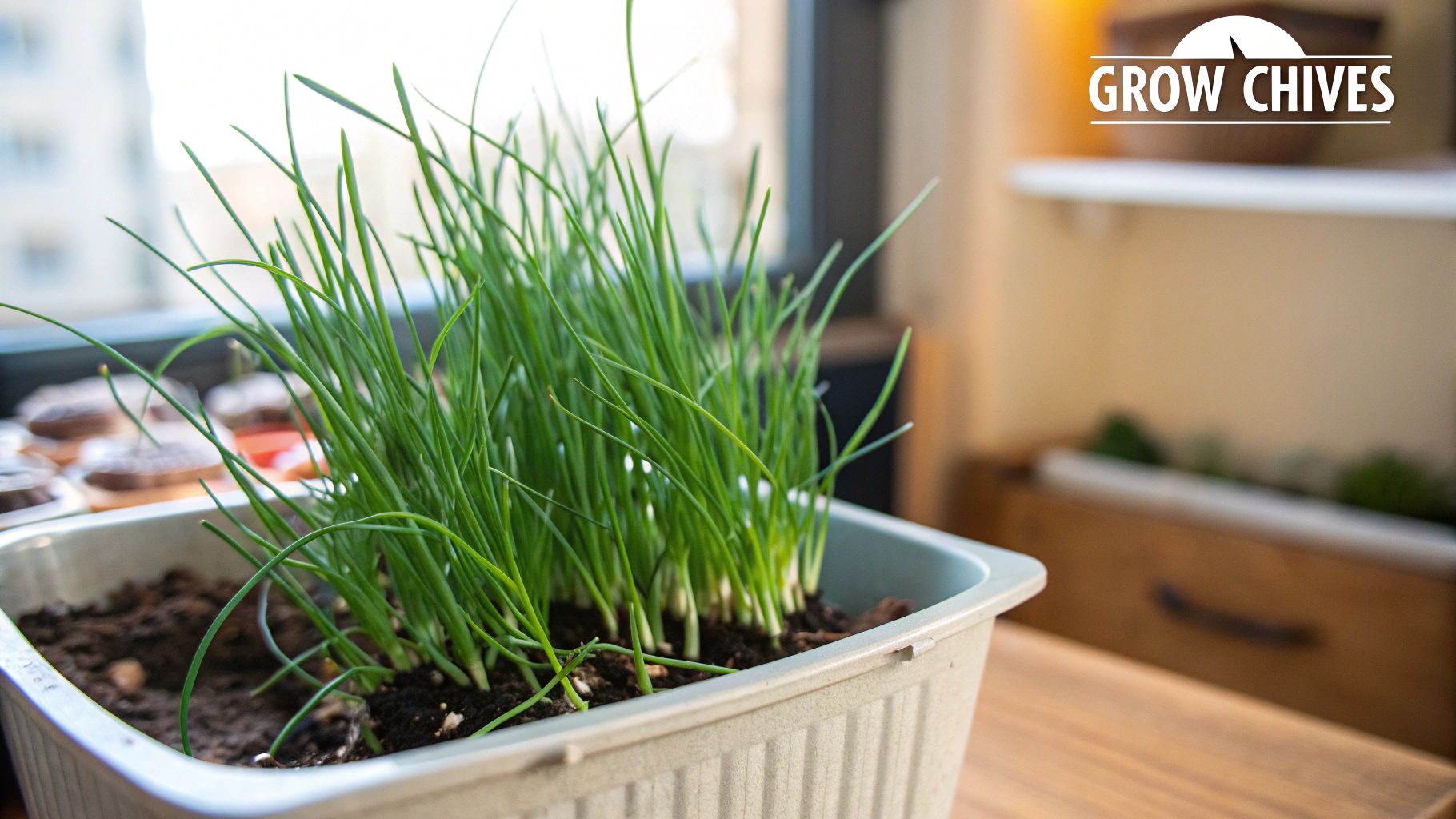
Why Chives Thrive Indoors
Chives are not particularly demanding, which is why they adapt so well to indoor environments. Unlike sun-loving Mediterranean herbs, chives can tolerate less direct light, making them suitable for an east-facing window or even a bright spot in a room without full sun. Their minimal needs make them an excellent choice for an office desk garden or a small apartment kitchen where prime sunny real estate is limited. They can be grown easily from seeds or, for a faster start, from a clump divided from an existing plant.
Actionable Tips for a Bountiful Harvest
To keep your chive plant healthy and productive, follow these simple guidelines:
- Potting and Soil: Select a pot that is at least 6 inches deep to accommodate their bulbous roots. A standard, all-purpose potting mix with good drainage is perfectly sufficient.
- Watering Wisely: Chives prefer consistently moist but not waterlogged soil. Water thoroughly when the top inch of the soil feels dry. They are more tolerant of a missed watering than many other herbs.
- Harvesting for Growth: The best way to harvest is to give the plant a "haircut." Use scissors to snip the leaves about two inches above the soil line. Always harvest the outer leaves first, as this encourages new growth from the center of the clump.
Key Insight: Regular "haircuts" are essential. This harvesting method not only provides you with fresh chives but also prevents the leaves from becoming old and tough, stimulating the plant to produce tender new shoots.
4. Parsley (Petroselinum crispum)
Parsley is a versatile and popular herb, celebrated for its bright, grassy flavor that enhances countless dishes. As a biennial plant often grown as an annual, it adapts exceptionally well to the controlled environment of an indoor garden. Both the curly-leaf variety, known for its decorative ruffled texture, and the flat-leaf Italian type, prized for its more robust flavor, are among the easiest herbs to grow indoors, providing a steady supply of fresh greens for garnishes, sauces, and salads.
Why Parsley Thrives Indoors
Unlike sun-loving herbs such as basil, parsley is more tolerant of lower light conditions, making it a perfect candidate for less-than-ideal window placements. It performs well in east-facing or even bright north-facing windows, which receive less intense, direct sunlight. This adaptability makes it a forgiving choice for beginners. Furthermore, its preference for consistent moisture is easier to manage indoors than in an outdoor garden, where conditions can fluctuate dramatically. For these reasons, parsley is a staple in many urban kitchens and even in culinary schools that require a constant supply of fresh garnish.
Actionable Tips for a Bountiful Harvest
To cultivate a lush, productive parsley plant, adhere to these targeted recommendations:
- Potting and Soil: Select a deep pot, at least 6-8 inches, to accommodate parsley's long taproot. Use a rich, well-draining potting mix. Good drainage is crucial to prevent the taproot from sitting in water, which can lead to rot.
- Watering Wisely: Maintain consistently moist soil, but avoid waterlogging it. Water thoroughly whenever the top inch of soil feels dry. Proper moisture levels are key to tender, flavorful leaves.
- Harvesting for Growth: Begin harvesting once the plant is established and has numerous stems. Always cut the outer stems first, taking them from the base of the plant. This technique encourages new growth from the center crown, ensuring a continuous harvest.
- Starting from Seed: Parsley seeds can be slow to germinate. To speed up the process, soak the seeds in warm water overnight before planting. For more guidance on this critical first step, you can explore detailed tips for starting seeds indoors.
Key Insight: Harvesting the outer stalks is the most important practice for indoor parsley. It not only provides you with fresh leaves but also improves air circulation to the plant's center, reducing the risk of disease and stimulating vigorous new growth.
5. Oregano (Origanum vulgare)
Oregano is a robust, sun-loving herb from the Mediterranean, famed for its pungent, peppery flavor that defines Italian, Greek, and Mexican cuisines. This hardy perennial adapts surprisingly well to indoor life, making it one of the easiest herbs to grow indoors for those who crave authentic, savory flavor. While Greek oregano (Origanum vulgare hirtum) is often celebrated for its intense taste, common oregano is also a fantastic and forgiving choice for beginners.
Why Oregano Thrives Indoors
Oregano's success indoors stems from its preference for conditions that are easy to replicate: bright light and drier soil. It’s not as thirsty as herbs like basil or mint, making it a low-maintenance option for busy plant parents or even a dry office environment. Its resilience allows it to flourish in a simple pot on a sunny windowsill, ready to be snipped for homemade pizza sauce or roasted vegetables.
Like its Mediterranean relatives, oregano requires at least six hours of direct sunlight per day. A south or west-facing window is ideal. Without enough light, the plant can become leggy and its leaves will have a less potent flavor, so supplementing with a grow light is a great strategy if your natural light is limited.
Actionable Tips for a Bountiful Harvest
To cultivate a lush, flavorful oregano plant indoors, follow these specific guidelines:
- Potting and Soil: Select a clay or terracotta pot with ample drainage holes. These materials are porous and help wick excess moisture away from the roots. Use a sandy, well-draining potting mix, similar to a cactus or succulent blend, to prevent waterlogging.
- Watering Wisely: This is crucial for oregano. Allow the top inch or two of the soil to dry out completely between waterings. Overwatering is the most common mistake and can quickly lead to root rot. It’s better to err on the side of underwatering this herb.
- Harvesting for Growth: Begin harvesting once the plant reaches about four inches in height. Regularly trim stems, cutting just above a set of leaves. This encourages the plant to branch out, creating a fuller, bushier shape and preventing it from developing a woody, less productive base.
Key Insight: Harvest oregano leaves before the plant begins to flower. Once it flowers, the plant directs its energy toward seed production, which can cause the leaves to lose their signature potent flavor and become slightly bitter.
6. Thyme (Thymus vulgaris)
Thyme is a hardy, fragrant herb renowned for its earthy, slightly minty flavor that enhances everything from roasted meats to savory stews. As a resilient Mediterranean native, it excels in indoor conditions, particularly thriving in the drier air and bright light typical of most homes. Its low-maintenance nature makes it one of the easiest herbs to grow indoors, offering a fresh supply year-round. While common thyme is a kitchen staple, exploring varieties like lemon thyme or French thyme can add sophisticated citrus or peppery notes to your culinary repertoire.
Why Thyme Thrives Indoors
The secret to a happy indoor thyme plant is replicating its sunny, arid origins. It craves light and is remarkably drought-tolerant, making it forgiving for those who occasionally forget to water. A bright, south-facing windowsill is perfect, as it provides the 6+ hours of direct sun thyme loves. Its preference for dry conditions means it's less susceptible to the fungal issues that can plague other herbs in a humid indoor environment. You’ll often see lemon thyme flourishing in sunny kitchen windows or compact common thyme varieties used in countertop herb containers.
Actionable Tips for a Bountiful Harvest
To cultivate a lush, flavorful thyme plant, focus on its core needs of light and drainage:
- Potting and Soil: Select a clay or terracotta pot, as its porous nature helps wick away excess moisture. Use a sandy, well-draining potting mix, such as a cactus or succulent blend, to prevent waterlogged roots, which is the most common pitfall.
- Watering Wisely: Thyme despises wet feet. Allow the soil to dry out completely between waterings. To check, insert your finger an inch or two into the soil; if it’s dry, it’s time to water thoroughly.
- Harvesting for Growth: Snip sprigs as needed, cutting just above a leaf node to encourage new growth. Regular trimming not only provides you with fresh herbs but also helps the plant become fuller and prevents it from getting woody and sparse. Prune more heavily after it flowers to maintain its compact shape.
Key Insight: Unlike many herbs that wilt dramatically when thirsty, thyme is incredibly resilient. It's better to underwater this herb than to overwater it. Root rot from excess moisture is a far greater threat to its survival than a brief period of dryness.
7. Cilantro/Coriander (Coriandrum sativum)
Cilantro is a fast-growing, cool-weather herb whose fresh, citrusy leaves are a cornerstone in Mexican, Southeast Asian, and Indian cuisines. As a dual-purpose plant, its seeds are harvested as the warm, earthy spice known as coriander. Unlike heat-loving herbs, cilantro can bolt (flower prematurely) in high temperatures, which makes the controlled environment of an indoor garden an ideal setting to prolong its leafy harvest, solidifying its place as one of the easiest herbs to grow indoors.
Why Cilantro/Coriander Thrives Indoors
The primary advantage of growing cilantro indoors is temperature control. Commercial growers often cultivate it hydroponically in climate-controlled facilities, while home gardeners can achieve great success in cooler areas of the house, like a basement with grow lights or a north-facing window. This herb doesn't demand the intense, direct sun that many others do, thriving instead in bright, indirect light which helps prevent bolting and keeps the leaves tender.
Actionable Tips for a Bountiful Harvest
To keep a steady supply of fresh cilantro leaves and eventually harvest coriander seeds, follow these specific guidelines:
- Sowing and Soil: Cilantro dislikes being transplanted, so sow seeds directly into their final container. Choose a pot at least 6-8 inches deep to accommodate its taproot and use a light, well-draining potting mix.
- Succession Planting: For a continuous harvest of leaves, plant a new batch of seeds every 2-3 weeks. This ensures you always have young, tender plants ready for use as older ones mature.
- Harvesting Leaves: Begin harvesting the outer leaves once the plant is about 4-6 inches tall. Snip them at the base, leaving the inner growth intact to continue producing. This method allows for multiple harvests from a single plant.
- Growing for Coriander: To harvest coriander, simply allow a few of your plants to bolt. Once the flowers fade and small, round green seeds form, let them turn brown and dry on the plant before collecting.
Key Insight: Unlike many herbs that benefit from pruning, cilantro's lifecycle is short. The best strategy for a constant supply isn't just harvesting one plant, but mastering succession planting to ensure you always have a fresh crop on hand.
7-Herb Indoor Growth Comparison
| Herb | Implementation Complexity 🔄 | Resource Requirements ⚡ | Expected Outcomes 📊 | Ideal Use Cases 💡 | Key Advantages ⭐ |
|---|---|---|---|---|---|
| Basil (Ocimum basilicum) | Moderate – needs consistent light and warmth | High – 6-8 hours direct sunlight, warm temps | Fast growth (6-8 weeks), high yield, aromatic leaves | Cooking, continuous harvesting, indoor kitchens | Versatile culinary uses, easy propagation, fresh aroma |
| Mint (Mentha species) | Low – hardy and adaptable | Moderate – tolerates partial shade, larger pots | Rapid spread (4-6 weeks), vigorous growth, strong aroma | Low-light areas, pest deterrent, containers | Nearly impossible to kill, continuous harvest, drought tolerant |
| Chives (Allium schoenoprasum) | Low – very low maintenance | Low – small pots, tolerant of neglect | Steady harvest, edible flowers, perennial growth | Beginners, low maintenance kitchens, ornamental use | Low maintenance, edible flowers, pest repellent |
| Parsley (Petroselinum crispum) | Moderate – slow germination, needs moisture | Moderate – tolerates lower light, larger pots | Long harvest (10-12 weeks), nutritious leaves | Low light indoors, nutritious garnish | High nutritional value, tolerates cooler temps, long harvest |
| Oregano (Origanum vulgare) | Moderate – drought tolerant, pruning needed | Low to Moderate – needs good drainage | Long-term perennial harvest (8-10 weeks), strong flavor | Mediterranean cooking, dry indoor spots | Drought tolerant, intense flavor, antimicrobial properties |
| Thyme (Thymus vulgaris) | Moderate – slow growing, minimal watering | Low – small pots with excellent drainage | Long-lasting perennial (12-16 weeks), aromatic | Small spaces, dry indoor air, varied flavors | Thrives in dry air, minimal watering, multiple flavor varieties |
| Cilantro/Coriander (Coriandrum sativum) | Moderate – fast growth but bolts quickly | Low – cooler temps, shallow containers | Very fast harvest (3-4 weeks), dual leaf and seed use | Cool indoor environments, quick harvests | Fast growth, dual-purpose herb, easy from seed |
Your Journey to a Flavorful Home Starts Now
You've just explored a curated list of the easiest herbs to grow indoors, from the sweet, peppery notes of basil to the earthy aroma of thyme. The journey from a bare windowsill to a lush, fragrant indoor garden is far less daunting than it may seem. The knowledge you've gained about each plant's specific needs is your foundational tool for success.
The core principles are refreshingly simple. Success hinges on respecting the fundamental requirements of each herb: providing adequate light, mastering a consistent watering schedule, and ensuring proper drainage. Whether you're working with the prolific nature of mint or the delicate leaves of cilantro, these basics remain the same. Regular harvesting isn't just a reward; it’s a crucial step that encourages robust, bushy growth and prevents your plants from becoming sparse and leggy.
Key Takeaways for Your Indoor Garden
As you embark on this rewarding hobby, keep these critical insights at the forefront of your mind:
- Light is Paramount: Most culinary herbs are sun-worshippers. A south-facing window is ideal, but a simple, affordable grow light can transform any corner of your home into a productive green space. Don't underestimate this factor; it's often the single most important variable for a thriving indoor garden.
- Harvesting Fuels Growth: Don't be timid. Regularly snipping leaves from your basil, parsley, and oregano sends a signal to the plant to produce more. This "pruning for a purpose" is the secret to a continuous, flavorful supply of fresh herbs.
- Water Wisely, Not Weakly: The "finger test" is your best friend. Pushing your finger an inch into the soil tells you exactly what the plant needs, preventing the common pitfalls of overwatering and root rot. Consistent moisture is key, but soggy soil is a death sentence.
Cultivating these herbs does more than just elevate your meals with unparalleled freshness. It creates a tangible connection to your food and introduces a calming, natural element into your living space. This practice enriches your daily routine, offering moments of mindfulness as you tend to your plants. As you enjoy the culinary delights of your indoor garden, consider exploring the broader wellness potential of herbs, such as their role in promoting restful sleep. Discovering how different plants can support your overall well-being is a natural next step in your botanical journey.
Starting is the most crucial step. Choose one or two herbs from our list that excite you the most. Gather your pot, soil, and seeds, and plant them. The satisfaction of watching that first sprout emerge is a powerful motivator, and the taste of your very first homegrown garnish will be an unforgettable reward.
Ready to begin your indoor gardening adventure? Homegrown Garden offers everything you need, from premium heirloom seeds to complete, beginner-friendly kits designed for small spaces. Find the perfect collection to start your journey at Homegrown Garden and bring the joy of a fresh harvest right to your kitchen.

